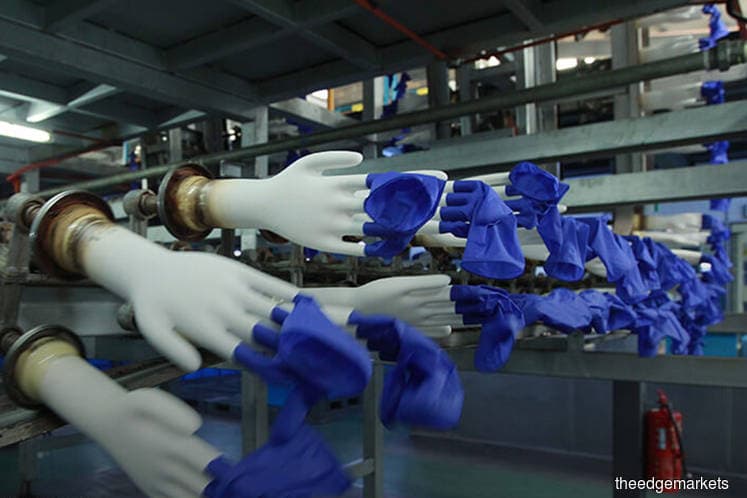
KUALA LUMPUR (July 6): The top four Malaysian rubber glove players are expected to increase their capacity by 16% in 2020, according to Hong Leong Investment Bank (HLIB) Research.
In a note on the rubber sector, the research house forecast an additional 26 billion pieces versus 19 billion in 2019.
“However, in view of the rapid increasing demand currently, we do not rule out the possibility of a hastier capacity expansion as an attempt to fulfil the increasing demand as well to remain competitive.
"China's glove makers are aggressive with their expansion plans (about an additional 100 billion pieces by 2023); however, we feel it will not affect Malaysian glove makers in the near future, with only about 35 billion pieces by 2021 and stronger confidence in Malaysian glove production quality,” it said.
The research house added that it remained bullish on gloves for the second half of the year (2H20) given the increasing demand for rubber gloves and that average selling prices (ASPs) are expected to continue rising until 1H21.
It noted that rubber glove ASPs had increased in tandem with higher utilisation rates. Since the beginning of the outbreak, ASPs have increased by about 10%. Spot order ASPs currently average at two to four times and now account for 15% to 20% of total capacity from 5% previously.
Furthermore, utilisation rates have increased to above 95% from 85% pre-Covid-19.
The research house also increased its financial year 2021 (FY21)-FY22 earnings forecasts by 74% and 55% respectively for Hartalega Holdings Bhd, maintaining its “buy” call and raising its target price (TP) of RM17.63 from RM10.08 previously.
HLIB is also optimistic that FY21 will be better for Karex Bhd due to improving production capacity, higher demand and upward trending ASPs. It upgraded the counter to "buy", with an unchanged TP of 59 sen.
The price of natural rubber (NR) is expected to range between RM4 and RM5 a kg for the rest of 2020 (1H20’s average was RM4.45 a kg). With no supply disruption, latex demand from the automotive industry is assumed to remain low.
“In 1H20, the price of butadiene (a core component in nitrile manufacturing) peaked at the end of January at US$935 (RM4,004)/MT before retracing to US$655/MT at the end of February. We foresee butadiene prices to increase slightly as petroleum prices [have] increased and given high demand from glove manufacturers,” it said.
While the rubber goods sector is currently trading close to two standard deviations above its five-year price-earnings ratio (PER) of 38 times, HLIB believes it still has legs to rally and is only in the midst of a rerating.
“Also, the sector has not seen peak quarterly earnings yet, which suggests there is still upside potential as per our study during the H1N1 episode (back then it took roughly five quarters to hit peak profit and there was strong correlation to share price performance).
"Besides, it is one of the rare sectors presently that has strong visible earnings growth, further justifying the premium. Moreover, there is potential for a second wave of Covid-19. We maintain 'overweight', with Top Glove Corp Bhd as our top pick for the sector, [with it] being the largest glove manufacturer in the world with a vast clientele readily supporting the increasing demand,” it said.